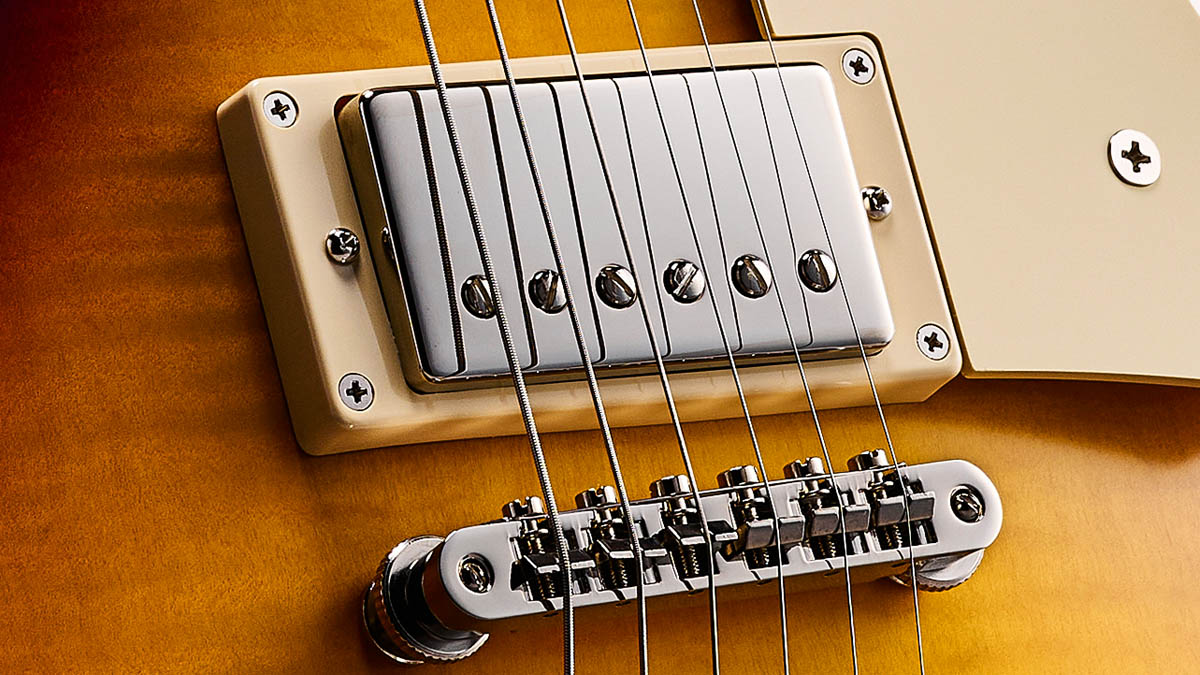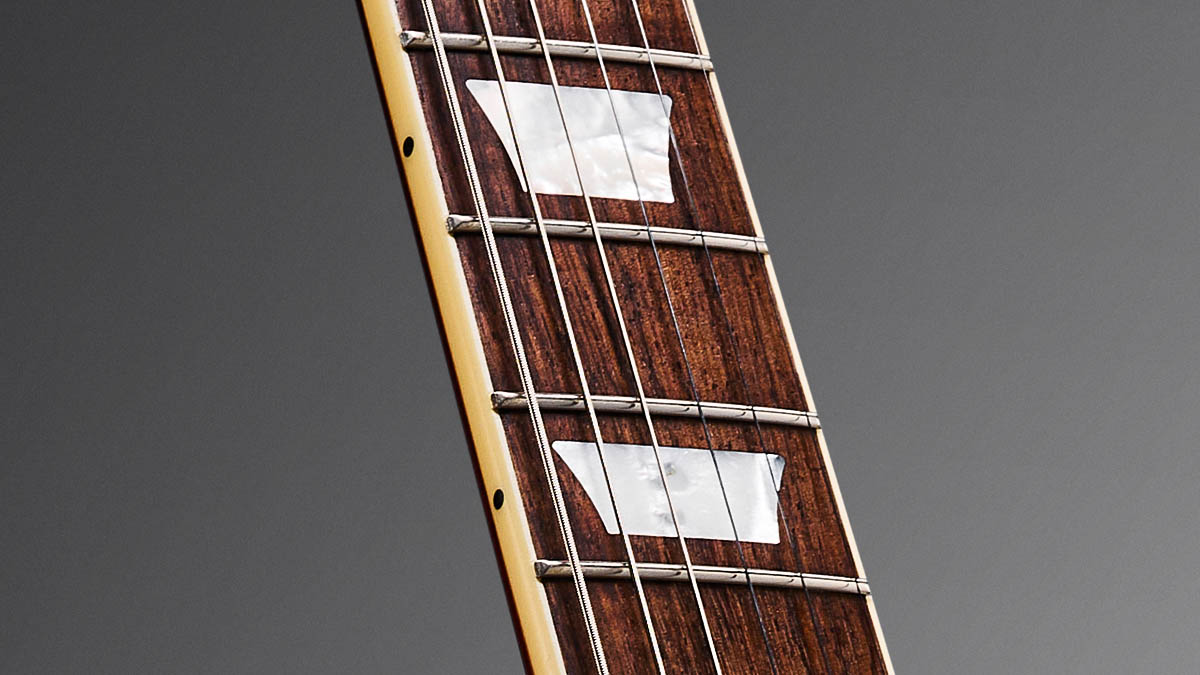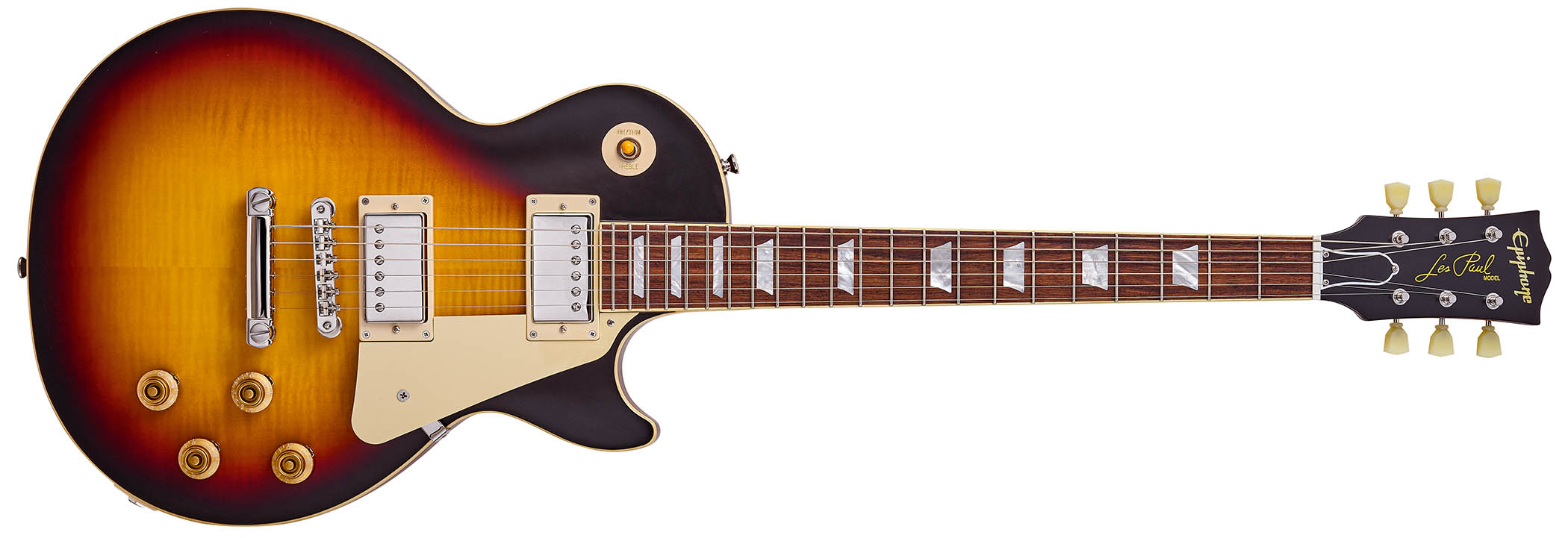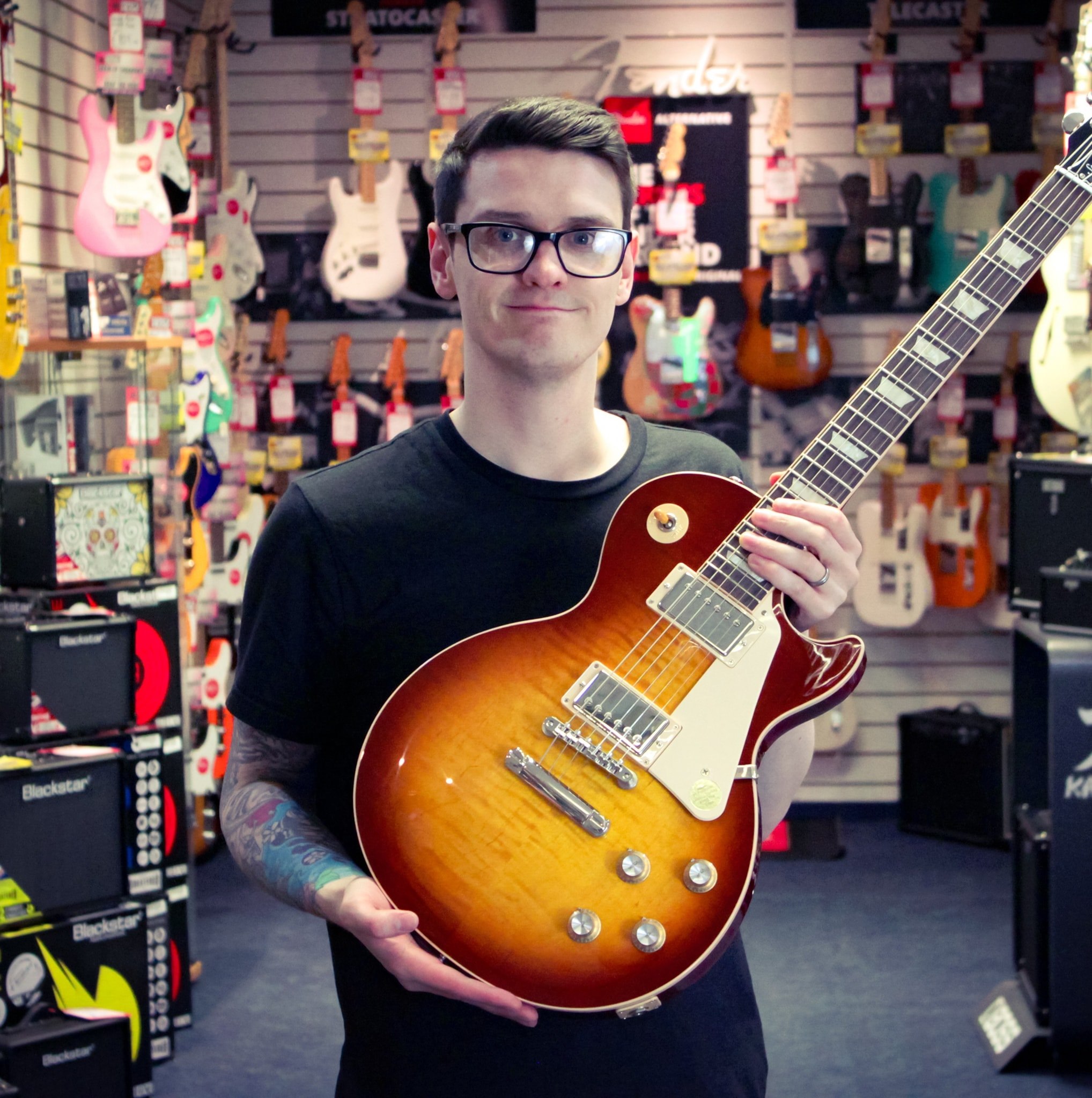Guitar World Verdict
It may not be an exact replica of a golden-age Gibson guitar, but we didn’t expect it to be. This is a fabulous guitar that more than evokes the spirit of the original while delivering a tone and feel that is sure to get the best out of your playing, and we can’t ask for more than that.
Pros
- +
Open-book headstock.
- +
The ultimate neck profile?
- +
Gibson Custombucker pickups.
- +
CTS potentiometers, and Mallory caps under the hood.
- +
Solid factory setup.
Cons
- -
Pity the fingerboard is laurel and not rosewood.
You can trust Guitar World
Page, Green, Gibbons, Marsden: the names tied to the coveted ’59 Les Paul are nothing short of legendary. Thought of by many as Gibson’s greatest achievement, an original ’Burst will set you back at least six figures – and that’s if you can even find one in the wild.
It is highly likely that most of us will go our entire playing careers without ever getting our hands on an original example, but that doesn’t mean we can’t get close to this sought-after tone.
That’s where the Epiphone Inspired By Gibson Custom series comes in. After successfully recreating the ’58 Korina Explorer, ’59 ES-355, and ’63 Firebird, Epiphone is now turning its attention to the most fabled electric model to leave its stable – but can Epi do it justice?
Taking a look at the body, and as you’d expect, Epiphone sticks to the original recipe of rich mahogany and a maple top. However, this replica’s flames come courtesy of a AAA-flamed veneer that crowns a thicker maple cap.
Not that you’d be able to tell – this guitar looks fantastic. Our review model doesn’t have the most pronounced figuring, but we actually quite like that – in some ways, it makes it look more authentic.

The finishing is on point, too. The dark perimeter of the Tobacco Burst perfectly complements this guitar’s iconic outline, while the subtle VOS treatment feels incredibly smooth under our fingers.
Making our way to the neck, and we’re instantly reminded why we love ’59 reissues. Not too big, not too small, you’ll understand immediately why this is considered by many to be the ultimate neck profile.
Whether it’s 1st-position chords or more demanding lead work, the guitar never feels like it gets in our way. Combine this stellar neck with perfect fretwork, a well-cut nut, and a nice setup out of the box and you get one of the most playable Epiphone guitars we’ve tried.
Okay, it has the look and feel, but it needs to have the sound to match. Thankfully, the tonal heart of this Les Paul is a duo of Gibson Custombucker pickups, which most definitely don’t let the side down. A creamy neck pickup paired with a fierce bridge position and days of sustain locked away inside make this guitar genuinely inspiring to play – and it seals the deal for us.

Is this the most authentic R9 out there? No, of course not. It may not be an exact replica of a golden-age Gibson guitar, but we didn’t expect it to be. This is a fabulous guitar that more than evokes the spirit of the original while delivering a tone and feel that is sure to get the best out of your playing, and we can’t ask for more than that.

Specs
- PRICE: $1,299 / £1,199
- BODY: Mahogany with maple top and AAA flame maple veneer
- NECK: Mahogany
- FINGERBOARD: Laurel
- FRETS: 22 Medium Jumbo
- PICKUPS: Gibson Custombuckers
- CONTROLS: 2 volume, 2 tone; CTS potentiometers, mallory capacitors, ’50s wiring
- HARDWARE: ABR-1 bridge, Gibson historic reissue stop bar, Epiphone Deluxe tuners
- FINISH: Tobacco Burst (as reviewed), Factory Burst, Iced Tea Burst, Washed Cherry Sunburst
- CASE: Hardshell with brown exterior, pink interior, and Inspired by Gibson custom graphics
- CONTACT: Epiphone

Daryl is a Senior Deals Writer at Guitar World, where he creates and maintains our 200+ buyer's guides, finds the best deals on guitar products, and tests the latest gear. His reviews have been featured in prominent publications like Total Guitar, Future Music magazine, and MusicRadar.com.
During his career, he has been lucky enough to talk to many of his musical heroes, having interviewed Slash and members of Sum 41, Foo Fighters, The Offspring, Feeder, Thrice, and more. In a past life, Daryl worked in music retail. For a little under a decade, he advised everyone from absolute beginners to seasoned pros on the right gear for their needs.
Daryl is also a fully qualified sound engineer, holding a first-class Bachelor's degree in Creative Sound Production from the University of Abertay.
“I was in a frenzy about it being trapped and burnt up. I knew I'd never be able to replace it”: After being pulled from the wreckage of a car crash, John Sykes ran back to his burning vehicle to save his beloved '76 Les Paul
“It holds its own purely as a playable guitar. It’s really cool for the traveling musician – you can bring it on a flight and it fits beneath the seat”: Why Steve Stevens put his name to a foldable guitar
“A virtuoso beyond virtuosos”: Matteo Mancuso has become one of the hottest guitar talents on the planet – now he’s finally announced his first headline US tour











